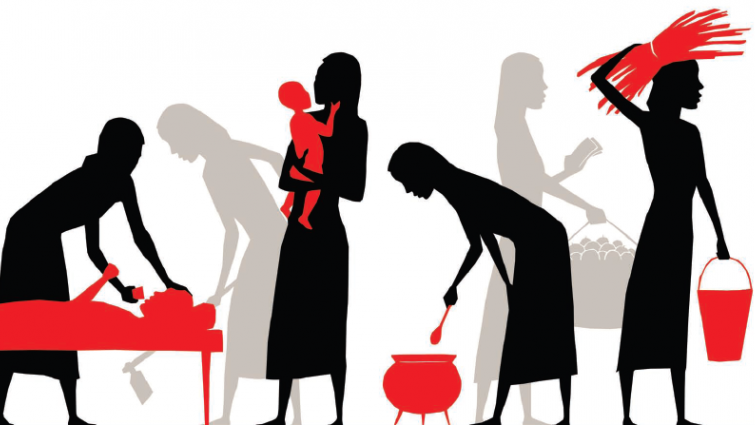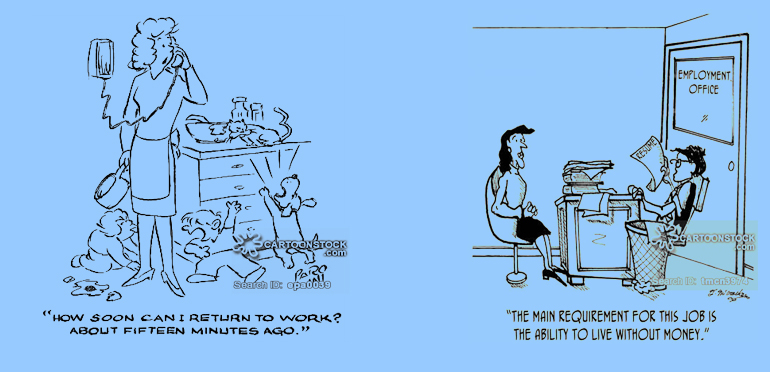[Editor’s note: This is Part I of the two-part ‘Gender wage gap’ series. Read Part II here.]
[dropcap]S[/dropcap]imone de Beauvoir captured patriarchy, its sustenance and reproduction by the socialisation and colonisation of both male and female psychology pithily in one sentence, “One is not born but rather becomes a woman.” In what seems like a logical extension to the same, Cynthia Enloe, in her book Banana, Beaches and Bases, argues how women’s labour is not inherently cheap, but is made cheap (Enloe 2014, pg. 250) by a gradual process requiring regulated patriarchal dominion. Highly unequal wage-distributions, be it in a small industry in Kundli, or a multinational syndicate in Mumbai, throw into stark relief the gross exaggeration of all the self-congratulation of “21st century” conversations generously earmarking the progress we’ve made towards gender equality, conveniently glossing over the fact that women still continue to slog more yet earn less than men. As a matter of fact, women in India to this day make only 67% of what men would for doing the same job.


Psychology, economics and politics of ‘care work’
Woman’s nature as the nurturer cemented with the ideals of marriage, dutifulness, subservience, childbearing and caring all go on to purchase the claim that household chores come naturally to women when in fact “woman’s nature” so defined is relative and ancillary to males, in a language of their authorship only to pander to “their projects, their fears and their needs.” (Beauvoir, 128) All components of culture we consume, from mythology, art, politics, women’s magazines, advertisements, to Freudian psychology go on to market the highest aspirations for women within the confines of marriage and motherhood making other aspirations affordable only as a supplement to the essential and never as a substitute. Betty Friedan called this the Feminine Mystique referring to “the strange discrepancy between the realities of our lives as women and the image which we are trying to conform to” (Friedan, 9). Capitalism and patriarchy are in cahoots with each other as the global politics of industries is a cause and effect of patriarchal ideas, from the beauty and dubiously christened healthcare industry to the IT sector, catalysing and sustaining the dichotomous relationship between the genders, from factory boardrooms to industry floors, homes, communities, and everywhere.
Just as women’s voices have been cited out of male bibliographies, their economic and emotional contribution is invisibilised by indicators like the GDP. A study by McKinsey Global Institute (MGI) in 2016 highlighted that women in India contribute only 17% to the GDP compared to the global average of 37%, making their contribution the lowest in all regions of the world. An ILO report showed pertinently in this regard, that women contribute three times more to unpaid traditional occupations and household work than men which only illustrates a novel oppression as capitalism becomes the handmaiden of patriarchy. Another ILO study revealed that women form 60% of the lowest paid labour, but only 15% of highest wage-earners. This is because women worldwide are horizontally segregated into low paying jobs as assembly line workers, secretaries, typists, beauticians, nurses, caregivers etc.The government relies heavily on female workers for its schemes like Integrated Child Development Services (ICDS) and National Rural Health Mission (NRHM) but pays them an honorarium well short of the minimum wage and calls them “volunteers”
A survey in India conducted by the World Economic Forum recorded responses of 60 of the 100 best employers in India and concluded that two-thirds of the surveyed companies employed women in only 10% of the senior management positions. Traditional stereotypes regarding women’s caregiving nature also inform government employment. The government relies heavily on female workers for its schemes like Integrated Child Development Services (ICDS) and National Rural Health Mission (NRHM) but pays them an honorarium well short of the minimum wage and calls them “volunteers” to avoid payment of salary or grant of other social security benefits like pension, healthcare etc. to them.
Maternity and labour market
As pointed out by Joan Williams, “Western wage labour is premised on an ideal worker with no child care responsibilities” making “mothers systematically “choose” against performing as ideal workers in order to ensure that their children receive high-quality care.” This point, concurrently with the absence of amenities for child supervision and elderly care, implies that women are regularly compelled to withdraw from the labour market. An analysis of 500 supervisors by law firm Slater & Gordon revealed that beyond 40% employers are largely cautious of employing a woman of childbearing age, whereas a similar number would be vigilant of appointing a woman who has previously given birth or to engage a mother for a high-ranking position. Also, women who are unmarried are often refused job prospects because of their chances of quitting jobs on account of marriage or relocation with spouse. Women with no children are looked at as potential mothers and are thus not their first option. According to a study, a third of the directors would rather hire a man in his 20s or 30s over a woman of the same age, based on the fear of having to provide a maternity “sabbatical”. A quarter professed that they would rather employ a male to dodge subjects of maternity leave and child care. Researches also revealed that a third of the directors’ assert that women are not as competent at their jobs when they resume their work after a maternity leave. Thus, unsurprisingly as per World Bank records, women have no guarantee of an equivalent position after the maternity leave.
Questioning the entitlement
One should feel obliged that women bear what they do for motherhood. Pregnancy is not a sabbatical/vacation/walk in the park. It’s nausea and vomiting and leg cramps and back pain and some intense swelling and sometimes even risking death to bring a life into this world. It’s a sacrifice and the world must be grateful, keeping at bay its hideous sense of entitlement. Pregnancy is not a solitary enterprise, it is a contribution to the world. Women are taking time off to provide the world with the ‘workforce’ that sustains these industries at the cost of their bodies. By no means should their careers hang in the (im)balance as well.
A glimpse of the same entitlement is evidenced in arguments which cite the instrumental potential of women’s work for the economy or the overall welfare of men and children as ‘reasons’ against its invisibilisation, covered by The Leaflet here and here. These debates flag important issues but just so we don’t miss the woods for the trees, it is perhaps more important to realise what such discourses must primarily serve as a ready reckoner of — that women’s rights and wellbeing as a deontological category, distinct from the privileges of their husbands and children is still not considered sufficient reasoning to make it morally imperative to increase both women’s access to better and more opportunities as well as the acknowledgement of their existing contribution to the workforce.
How education plateaus at high-income levels
Educational opportunities can go a long way in allowing women access to better and more well-paying jobs. However, the gender wage gap is actually wider for highly qualified women. Women who’ve not finished high school make 9.37% less money than their male counterparts while the ones who have degrees like CA/CS/ICWA earn 44.25% less than males. This comes as a rude shock to all of us who’ve pinned our hopes too high on education and competence, especially as conditions of work have not qualitatively improved. According to the 2012 “Gender Pay Gap in the Formal Sector” report by the Wage Indicator Foundation and IIM Ahmedabad, the pay gap increases with women’s age, work experience, educational qualifications and rise in occupational hierarchy. Hiring discrimination in the formal sector when employers perceive female employees as less reliable prevents women from accumulating human capital at the same rate as men and has a cumulative hamstringing effect on the progress of their careers.


Negotiating at workplace
The WEF survey aforementioned also highlighted the glaring gap between the average annual income of a woman at $1,185, less than a third of that of a man at $3,698 in the corporate sector in India. Experimental studies show that men are evaluated better than women in academia and women are routinely shamed for not overtly exhibiting traditionally feminine soft skills like warmth and empathy in interpersonal interaction, which have no bearing on social perceptions of males in similar positions. Women don’t only have to shoulder the burden of new manifestations of structural patriarchy at the workplace but also look good, smile and be pleasing while they’re at it.
Only women are distinctly obligated to steer clear of the RBF (“resting bitch face”) in pursuit of their careers, while for men a similar expression (or lack thereof because RBF is mostly an expressionless female who isn’t smiling literally all the time) is a badge of commitment and who knows maybe even sex appeal by some double standards of toxic masculinity. RBF at times may be a female coping mechanism to not be over apologetic or continually pander to social constructs for validation, to be perceived as a serious professional and a conscious attempt at disaffection in the face of a world that chides women for being shallow, over emotional and not rational enough. At others it’s just an inherited facial structure and in any case women being villainised for it is symptomatic of a profoundly patriarchal society.
Usually high-achieving female professionals, internalise these repeated negative evaluations of their competence and are more vulnerable to the impostor syndrome persuading themselves into believing that they’ve embittered their way into getting what they’ve achieved. A study revealed that upon graduating from college, women ask for approximately 20-30 percent less money than men and also felt they deserved less than what the men felt they deserved. Research by Hewlett Packard further proved that women applied for a promotion only if they satisfied 100 percent of the requirements listed for the spot while men applied even when they could only meet 60 percent of the qualifications.
Another research by two psychologists also found that even when women objectively scored as well as men, they were likely to underestimate their performance, while the men would overestimate theirs. It has also been found that women negotiate a lot less than men for better salaries and promotions because they are socialised to be perfect and meet all expectations while men are taught to value courage and risk taking. Their risk averse disposition coupled with the fact that behaviours like self-promotion that work well for men often backfire severely for women, (AAUW’s yearly account on the gender pay gap) makes them ask for more very infrequently compared to men. This is because society places a huge premium on slight exclusively male overconfidence (if I were permitted the liberty to redundantly prefix male to overconfidence). Female overconfidence translates into perceived obnoxious self promotion by women.
Thus, they only strive to be competent and wait for someone to notice their work and end up getting blamed for the wage gap or for not negotiating/trying well enough while they spend their lives attempting to perfect the degree of visibly “warm, pleasing and empathetic” in order for their confidence to be well received.
[Editor’s note: This is Part I of the two-part ‘Gender wage gap’ series. Read Part II here.]


